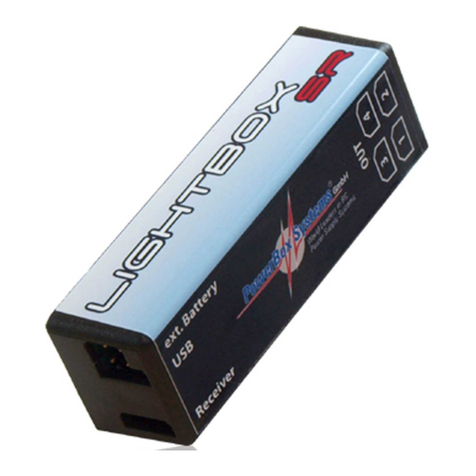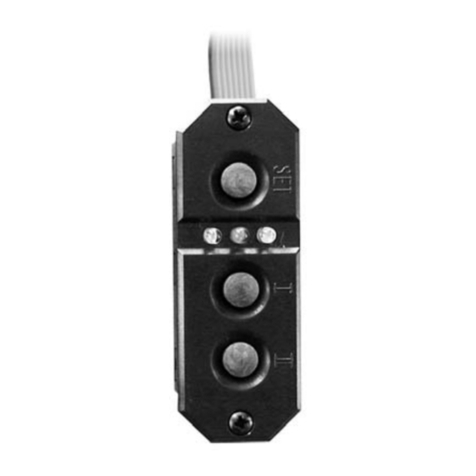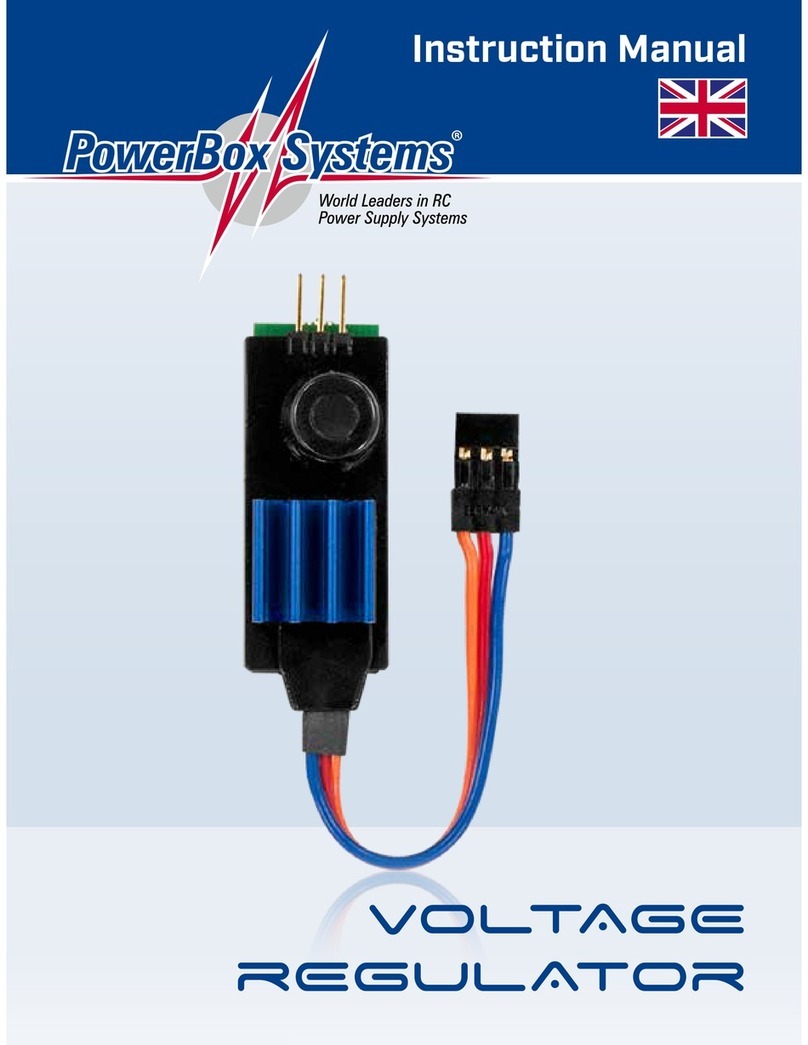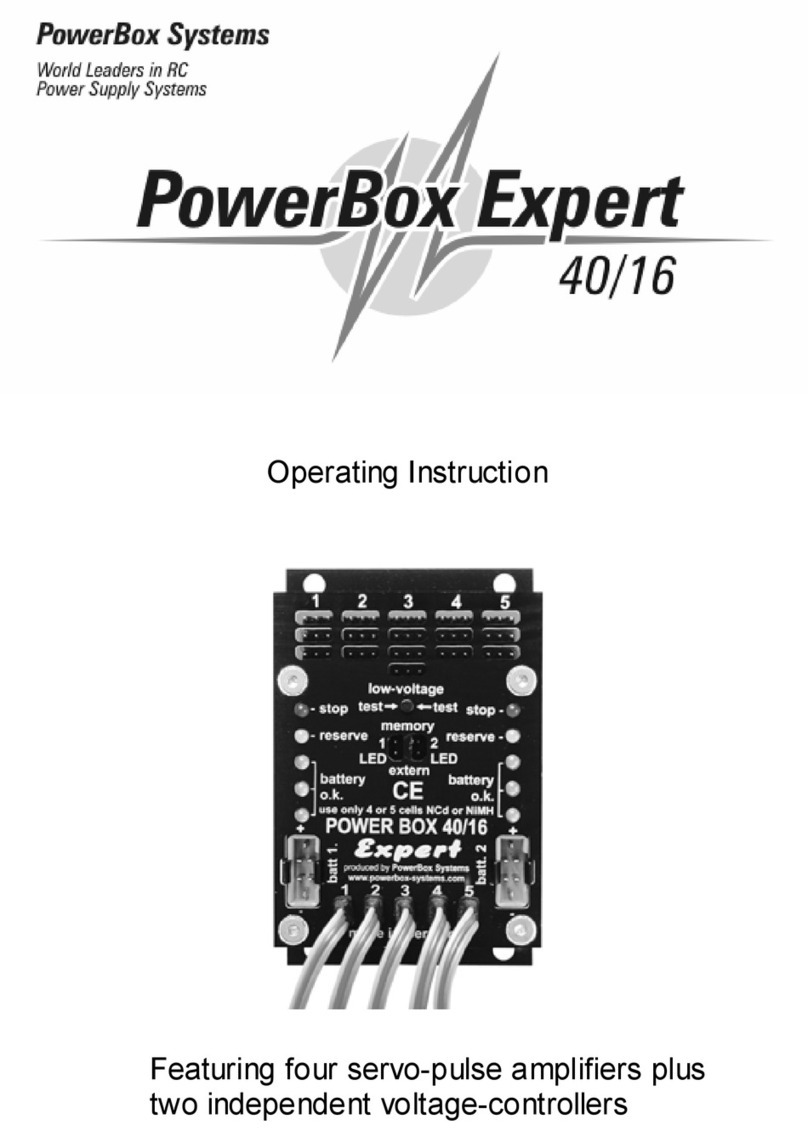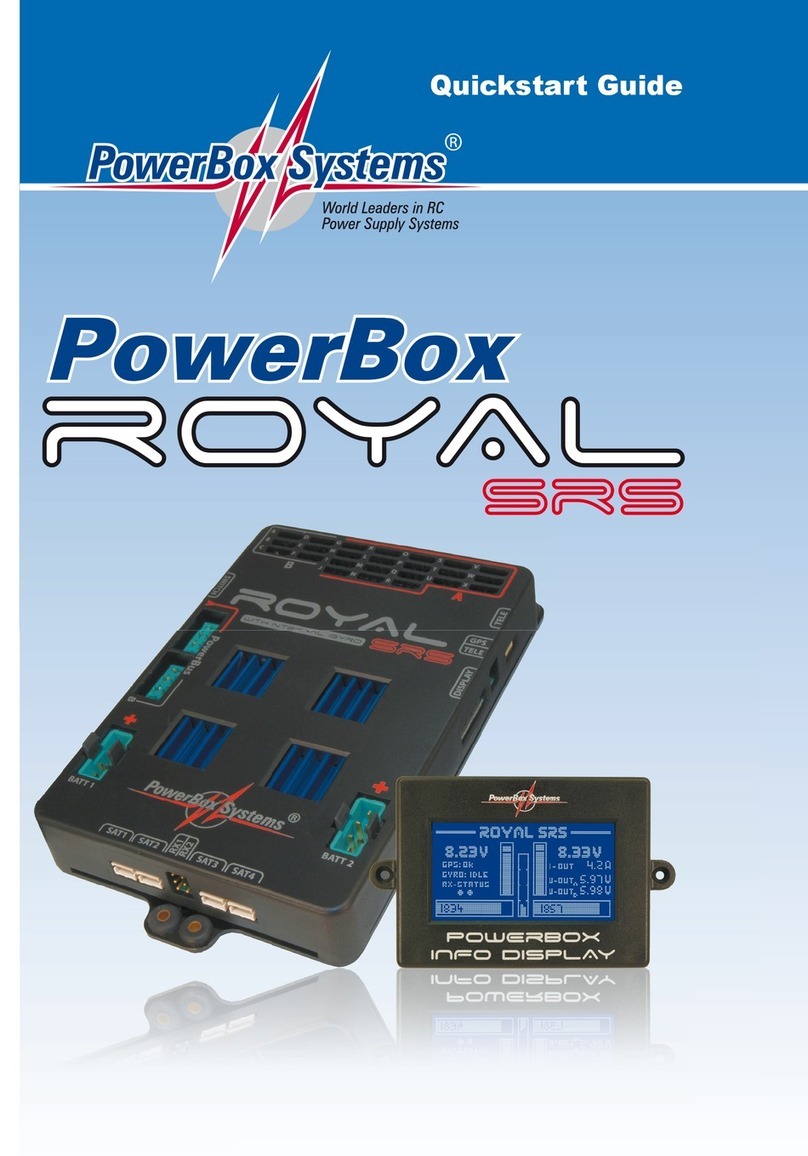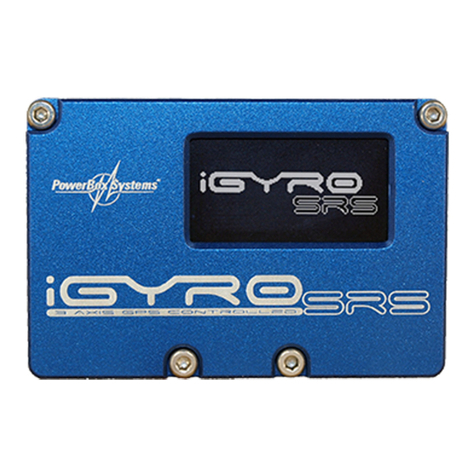
2PowerBox-Systems − World Leaders in RC Power Supply Systems
Dear PowerBox customer,
Congratulations on your new PowerBox iESC brushless speed controller.
The iESC is based on the latest generation of controllers for brushless
motors, with a 32-bit processor and expanded functions such as telemetry
and the ability to adjust settings directly from the transmitter. The high-per-
formance micro-processor ensures smooth running for brushless motors
with up to 40 poles.
Brake power, motor timing, direction of rotation, BEC output voltage,
freewheel, helicopter mode and much more can be adjusted directly from
a PowerBox or Jeti transmitter. This means that set-up boxes and plug-in
jumper cards are now a thing of the past.
The iESC provides a comprehensive set of telemetry data for PowerBox,
Jeti and Futaba transmitters, including battery voltage, current, consumed
capacity, rotational speed and controller temperature.
A high-performance 8A BEC, which supplies current to the receiver by
means of two 0.5mm² patch cables, rounds off the range of functions.
Features:
• High-performance brushless speed controller with 32-bit technology
• Latest generation of MosFets for reduced power loss and maximum
possible reliability
• Telemetry for PowerBox, Jeti and Futaba radio control systems
• Fixed-wing and Helicopter modes
• Adjustable direction of rotation, timing, battery type, freewheel, start-up
current and other parameters
• Adjustable regulatory parameters in helicopter mode
• Parameters directly adjustable from PowerBox and Jeti transmitters
• Parameters adjustable using LCD programming device for all systems
• 8A BEC
• Power-on self-test checks motor, throttle position and voltage
• Ingenious case design ensures optimum cooling
